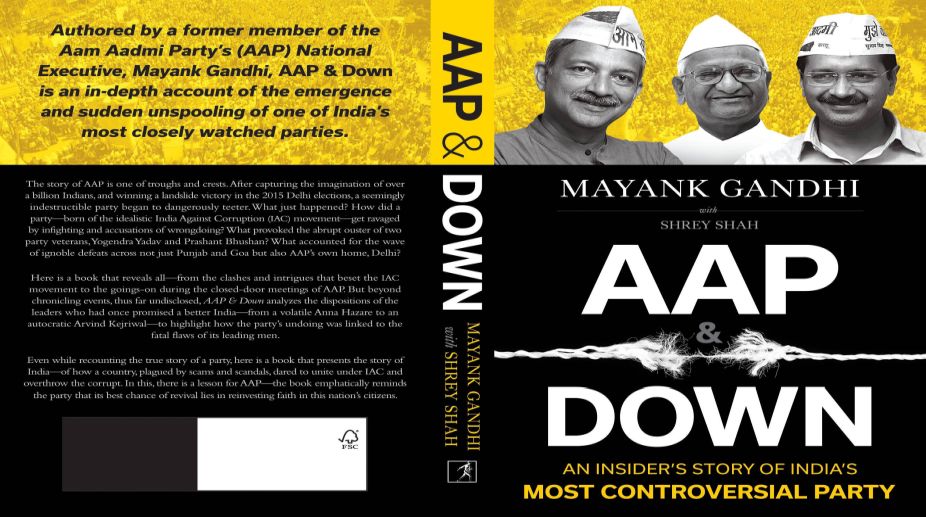BJP calls AAP’s denial of medicine to Kejriwal claim a stunt
Delhi BJP President Virendra Sachdeva said the AAP is trying to gain sympathy for the jailed Delhi chief minister through the claim.
This is a book that claims to expose the hypocrisy of AAP’s leadership and shows how passionate and sincere leaders became a part of the system they wanted to change… A review

AAP & Down: An Insider's Story of India's Most Controversial Party By Mayank Gandhi and Shrey Shah Simon & Schuster India.
‘This was a battle of perception,” writes Mayank Gandhi in his new book, AAP & Down. And it does seem to be true. Whoever or whatever Arvind Kejriwal, India Against Corruption and later, the Aam Aadmi Party were fighting, they were fighting a battle of perception. And to an extent Gandhi is seen fighting the same battle in the book.
The book explores the rise and fall of one of India’s most nascent political parties — AAP. Starting from the beginning of the IAC movement, Gandhi quite beautifully locates himself within the insider posse that later became AAP.
Before a review it is important to note that a book like this goes a long way in documenting one of the newest phases of Indian political history. What the IAC movement seemingly did and what AAP had promised to do was nothing short of revolutionary.
Advertisement
But Gandhi keeps reminding us of this, a bit too often. Too many anecdotes in the book are described as being momentous, nothing like he’d ever witnessed before; and too often were Gandhi and his team at the “cusp of change”.
While the book is supposed to trace the events that led to the rise and eventual crash of Arvind Kejriwal and AAP, Gandhi sometimes deviates from the central narrative and is seen being a bit self-indulgent at times.
Nevertheless, he does a nice job of weaving historic events to form an exciting narrative and Shrey Shah puts it together into a page-turner of a book.
The most interesting aspect is the characterisation of Anna Hazare and Kejriwal. From the moment the decision was made to make Anna the face of the IAC movement, conversations between Gandhi and Kejriwal paint a troublesome picture of his.
From Gandhi constantly reminding Kejriwal that Hazare’s inside circle had too much influence on him to others pointing out the lack of depth in Hazare’s political thought. Though eventually, these were the reasons Gandhi seems to think Kejriwal fell out with Hazare.
And later, Gandhi claims to expose how Kejriwal, after the 2015 landslide victory in Delhi, had become somewhat like Hazare — treasuring his loyalists, gathering them by his side in large numbers, and making sure his command was executed. Gandhi says, “… these days, his prime desire was to keep rigid control over AAP members and quash dissenting voices.” The author says that the first seeds of Kejriwal’s change in operating his team were sown when the decision was made to transform the IAC movement into a political party.
The book’s central objective is to show the contrast between ideologies at the beginning of the IAC movement and ideologies of AAP leadership after winning two elections. A movement that started off with a volunteer-heavy structure had transformed into a party that did not value its volunteers, according to Gandhi.
In fact, Gandhi mentions that after the 2015 victory, the power struggle within the party became more important to the leadership than performing the functions of the government. The arguments and coups to overthrow certain people had turned petty.
However, it would seem that Gandhi did not consider the difference between a people’s movement and a structured political organisation. When working against the system, Kejriwal and team had a different objective. Transparency was used to expose the system.
But after becoming the system themselves, Gandhi seems to expect AAP to operate like a people’s movement. While Gandhi’s passion for sticking to his principles is commendable, it would be naive to not expect an outfit’s operational strategy to change as it transforms itself.
Maybe that’s why he hints that India might need an all new people’s movement once again.
Advertisement